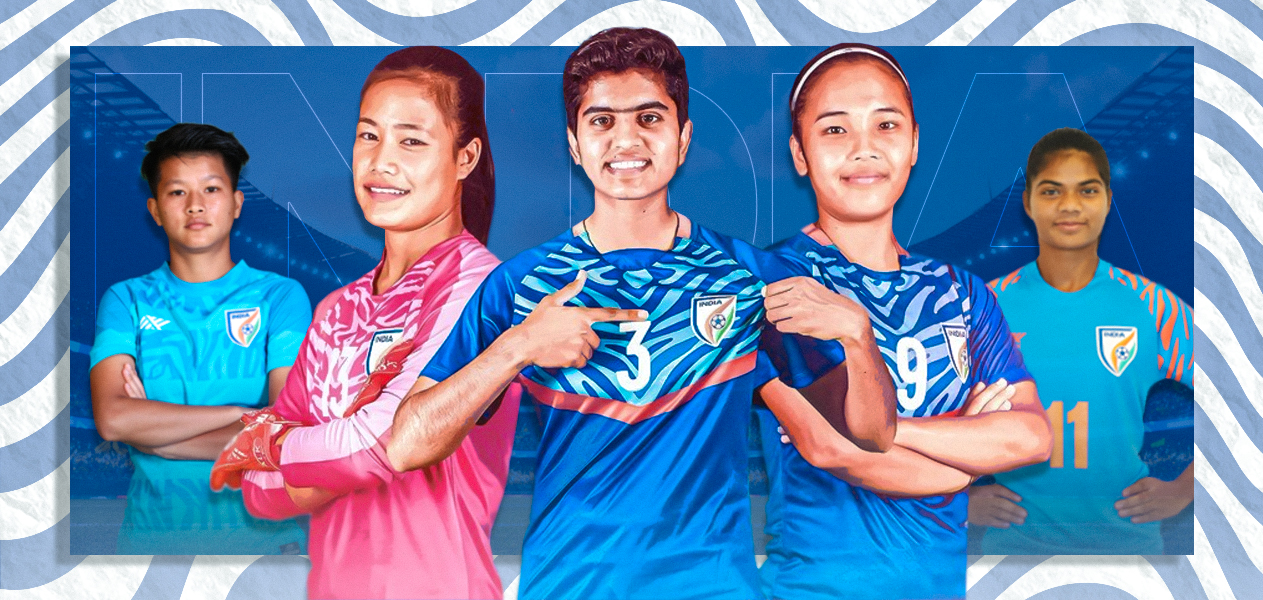Tough group, low expectations: India look to gain invaluable experience at 2022 FIFA U-17 Women's World Cup
Another Under-17 World Cup is upon us. This time, it’s the women who take centre stage. The FIFA Under-17 Women’s World Cup, many years in the making, will finally kick off on October 11, two years after it was initially scheduled.
The COVID-19 pandemic robbed one batch of their dreams, but Thomas Dennerby and his 2022 collective will look to live every young Indian female footballer’s fantasy out on the pitch.
In 2017, their male counterparts managed to score a single goal and concede nine in three games, losing all of them. The women will hope to go one better, to try and nick a point or a win, but their task is anything but easy.
Also Read – Aditi Chauhan exclusive: The journey, the lessons, the initiatives, and the road ahead
The team

The final selection had no notable omissions or inclusions. The core of the team, assembled by Dennerby and his staff over a period of 18 months, has been unchanged since the inception of this batch.
Astam Oraon, the designated captain, is one of two players in this team with senior national team experience. A hard-as-nails defender, she will hope to keep a clean sheet in the tournament, which seems to be Dennerby’s main aim.
Shilky Devi, the team’s deep-lying midfielder, will also be crucial to this goal. The Manipuri midfielder will aim to ensure that the defence is not overrun, acting as a screen for it. Her experience of being in the senior women’s AFC Asia Cup squad will come in handy.
The attack will, in all likelihood, be spearheaded by Serto Lynda Kom, a 17-year-old hailing from Manipur’s Young Welfare Club. She is India’s biggest goal threat but may be starved of service if the team sit deep for long periods of time.
Keisham Melody Chanu is expected to get the nod in goal, and it is here that India are most vulnerable. The young Manipuri keeper looked shaky under the bar during the exposure tour games. Her distribution will be a point of concern to Dennerby, who will hope that she’ll be able to deal with the barrage of shots heading her way.
Style of play
India are likely to line up in a 4-3-3/4-2-3-1 formation, with Dennerby evidently preferring the latter in the team’s games so far.
India’s tactics depend largely on their opponent. Against opponents of higher quality, the team will be set up more defensively and look to use the wings for attack. India do play quicker transitions when pitted against more equal opponents.
The Blue Tigresses largely use the wings to attack their opponents, while in defence they develop a compact shape in the centre to protect the goal, aiming for numerical superiority.
India look to attack with speed from the left flank and are able to showcase better combination play, while from the right there is a tendency of turning to long balls. The midfield gets involved in defensive transitions but gets bypassed in the offensive ones. The team usually attempt to press high up the pitch to win the ball, but the press is mostly directed at the fullbacks and not the opponent’s centre-backs.
When in defence, India try to create a block in the middle with both fullbacks stationing themselves on their respective flanks to make a block against the winger.
India do not try to play out from the back. Their keeper plays a long ball up the pitch, mainly aimed at the wings. During restarts, the defensive line remains quite high, in the middle of the half line and the edge of the 18-yard box.
The opposition
With two teams qualifying from each group, India face a steep task with Brazil and the USA in Group A. The two powerhouses are favourites, at least on paper, to make the knockouts ahead of the hosts. Morocco, making their debut, are somewhat of an unknown force, having just scraped through to the World Cup finals after pipping Ghana on penalties.
The US recently romped to their fifth CONCACAF Under-17 title, scoring 58 goals in seven games and conceding just the one. They defeated Mexico 2-1 in the final. India coincidentally played Mexico at the Italy Torneo, losing 2-0.
US forwards Amalia Villarreal and Melina Rebimbas will be key to their side’s title challenge as they seek to build on their best-ever finish (second place in 2008). They have not managed to reach the knockouts in their last three appearances — a record they won’t be too proud of.
Brazil also won their continental trophy and did not concede at all en route to their fourth South American Under-17 Championship title. Their record in Uruguay reads seven games played, all seven won and 32 goals scored. For them, Ingrid Aparecida Borges de Morais, better known as Jhonson, was the top scorer in Uruguay and is lethal in front of goal. Incredibly, Jhonson played only futsal till she was 15 but has now signed a professional contract with Toledo till 2026 with a release clause of US$10 million.
The expectations
“It’s not only about the result now. It’s about the performance to show that Indian girls can play football. But of course, inside the group, we have our own goals, and we are ready to fight for them. Against the USA, Brazil or Morocco, we are determined to earn points and score goals. And we’re going to show to the Indian fans that we have a good team. India, in a couple of years, can have a very successful team on the women’s side.”
The coach’s words speak volumes. Still in a nascent stage of their development, this Indian team will face tremendous pressure from opponents with far higher match experience.
India have played seven international opponents in 2022 till date, losing to six of them barring a 0-0 draw against the Faroe Islands. In these seven games, they have conceded 23 goals, scoring just three. Only two of these sides, Mexico and Chile, are playing at the World Cup.
For India, the game against Morocco will assume paramount importance, given the stature of the other two teams in the group. Making it to the quarters is a daunting task for them, so a win against the African side is the bare minimum.
Up against opponents whose ambitions lie far beyond the group stage, the young Blue Tigresses will need some staunch rear-guard action to come away with anything against Brazil and the US. If the results and performances of the U17 men from five years ago are anything to go by, India will once again find themselves matched up against rivals with quicker and more decisive actions.
The future
The World Cup experience will be beneficial to this group of women, but India will need a larger pool at the Under-17 level than just these two dozen women to build and sustain a strong national side in the future.
With the pool shallow at the senior level as well, these women are expected to soon push their seniors for spots in Suren Chhetri’s side. Given the Olympic qualifiers and other assorted tournaments are just around the corner, the India women’s national team could use some depth.
Keeping in mind India’s disappointing outing at the recently concluded SAFF Women’s Championship, there are plenty of senior spots up for grabs. In that sense, the journey for these young women in Indian football has just begun. The USA, Morocco and Brazil are merely the first hurdles.

